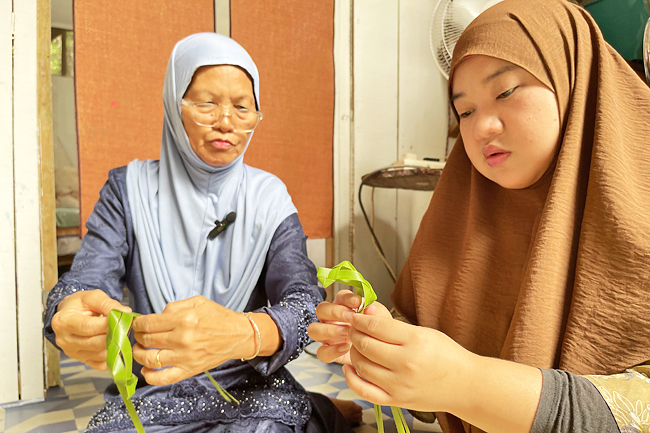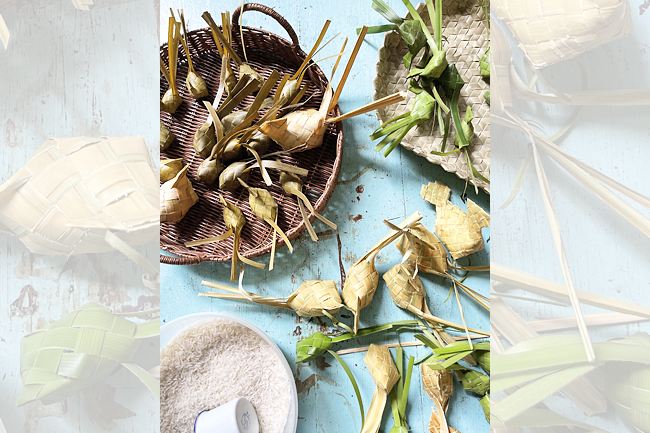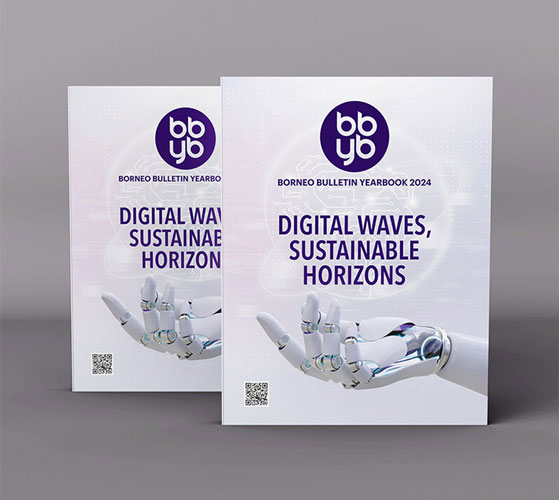With Hari Raya Aidilfitri gracing the Sultanate, we have all been indulging in the staple festive delicacies, and a dish most synonymous with this auspicious occasion is the ketupat – a traditional Malay dish of rice, steamed within an intricately woven casing made from either coconut or nipah palm leaves.
Some Bruneian families welcome the first morning of Aidilfitri with this dish, pairing it with peanut sauce or incorporating it into lontong, a savoury vegetable soup. But did you know that within our richly diverse local culture, there are other forms of ketupat, used for an entirely different purpose yet revered just the same?
With the seven recognised indigenous tribes in the Sultanate, cultural similarities may exist, but the histories behind them are often so distinct and diverse that they reveal hidden or previously unheard aspects of our people.
Among them is ketupat ayam, a staple in the rituals of the Dusun people. At its core, ketupat ayam is similar to the traditional ketupat, but what sets it apart is its woven casing. While the classic ketupat is square-shaped, ketupat ayam, as its name suggests, is crafted in the form of a chicken, with two distinct designs – a cockerel and a hen.
Cahayah binti Kilat, a Dusun elder, shared that ketupat ayam is primarily used during Tamarok – a traditional ritual practised by the indigenous Dusun people, deeply tied to their agricultural cycle and spiritual beliefs.
Rooted in animism, Tamarok is a ritual that allows the Dusun to commune with supernatural beings known as Derato, seeking blessings for health, safety and prosperity.


“Tamarok is performed to seek blessings. For Dusun non-Muslims like us, it serves different purposes: the sick seek healing and paddy farmers pray for a bountiful harvest in the next season,” said the 63-year-old.
She explained that the ritual requires a specific set of offerings, including chicken eggs, bananas, and taji, all presented in sets of seven – except for the chicken eggs. These offerings are then presented to the spirits. Taji is a type of food made from rice and coconut milk.
“According to our tradition, if we do not carry out this offering, we cannot consume these foods for that month. The spirits must be given their share first.
“Our ancestors taught us that this was a staple for our people – our rezeki (blessings). Since it came from the spirits, we offer it back to them in gratitude, hoping for continued abundance.”
According to another Dusun elder, Cahayah’s husband, Chominah bin Sidin – also known in the community as Chomwah – in Dusun culture, rice is believed to have been a gift.
“It did not originate from the earth but was a gift from the ‘orang di atas,’ or what they know as Derato.”
From his explanation, Tamarok consists of various rituals practised by the Dusun. One such ritual, observed at the beginning of the new lunar month, is called belapas – a small ceremony that individuals or families can perform on their own.
“They would take a portion of everything – a few grains of rice – and throw them behind their backs, towards the direction where the sun rises,” he shared.
Tamarok Padi, however, is a communal event conducted annually after the rice harvest. It involves the entire community and features larger offerings, depending on the season’s yield.
The ceremony begins after dusk and sometimes continues until sunrise, accompanied by ritual dances and drumming.
“There is a story that the Dusun people did not always practise Tamarok. It is said that long ago, the people of the earth survived by eating coal.
One day, the children of the Derato descended to play with the earth children. They would bring their own food with them. As they played together, the otherworldly children were confused about why the earth children ate coal.
Curious, the Derato children continued to visit, travelling back and forth between the sky and earth. However, they were forbidden from bringing paddy down to earth.
One day, one of the otherworldly children secretly took some grains of paddy with them and gave them to the earth children. The earthlings planted the grains, and in time, golden fields of rice covered the land.
“When Derato looked down and saw this sea of yellow, they became furious. But eventually, they allowed the people of the earth to keep their paddy – on one condition. The rice must always be offered to the spirits first at every harvest.”
Chominah then noted that this is just one of the many folktales of the indigenous Dusun, acknowledging that different Dusun tribes may have their own legends or histories that they identify with.
Regardless of the version, the Dusun husband and wife reflected on how Tamarok has been practised less and less, whether due to the conversion to Islam or simply because younger Dusun are unable to carry on the tradition due to the level of commitment it requires.
The Dusun husband and wife, who are also skilled weavers, often create them for educational purposes, showcasing the craft to tourists and introducing the younger generation to the traditions of the past. – Wardi Wasil


